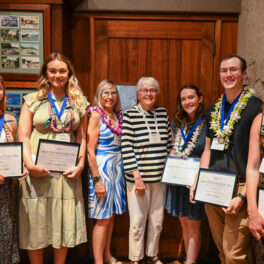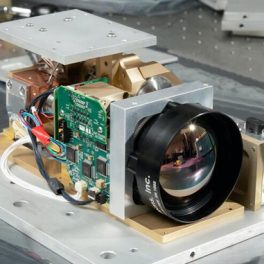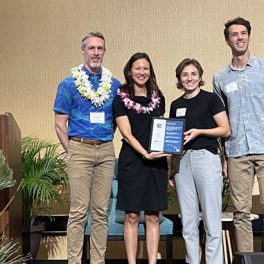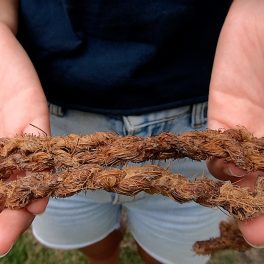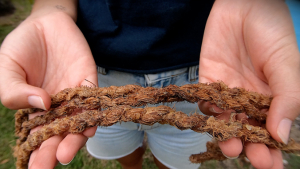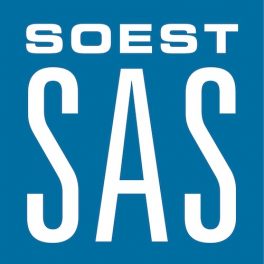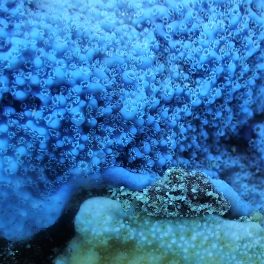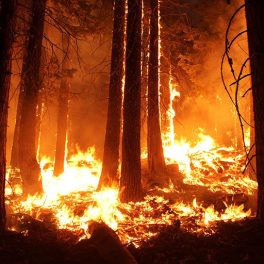The University of Hawaiʻi at Mānoa LGBTQ+ Center will host a National Coming Out Day Fair in celebration of Honolulu Pride Month on October 10, 10 a.m.–1 p.m. at the Campus Center courtyard. National Coming Out Day is an annual LGBTQ+ awareness day, to support anyone coming out of the closet.
First celebrated in the U.S. in 1988, the initial idea was grounded in the feminist and gay liberation spirit of the personal being political, and the emphasis on the most basic form of activism being coming out to family, friends and colleagues, and living life as an openly LGBTQ+ person.
“National Coming Out Day is important to me because it reminds me to be proud of my queer identity! I also think it is important because it celebrates those who have come out to themselves or others,” said Minami Cheever, a junior at UH Mānoa.
The fair will feature more than 25 LGBTQ+ and ally organizations, churches, service agencies and sports associations. Music will be provided by DJ A.i.T. and drag performances will be spotlighted throughout the afternoon.
The LGBTQ+ Center spearheads the event in an effort to provide an opportunity for everyone to affirm and be proud of all aspects of who they are. The center has hosted an annual fair since 2002. More than 500 students attended the fair in 2022.
“Having the National Coming Out Day Fair on campus gives me a sense of place as a member of the LGBTQ+ community,” said sophomore Gabrielle Huliganga. “This is an event for everyone to hopefully connect with people like them and to find their community. Out of the closet or not, I hope everyone knows that they are supported and loved!”
The fair is co-sponsored by the Hawaiʻi LGBT Legacy Foundation, Honolulu Pride and the Hawaiʻi Health and Harm Reduction Center. Hawaiian Airlines is also an official participant in the fair and will share resources from Haʻaheo, its LGBTQ+ employee association.
“I was overjoyed to hear that there were events to celebrate pride proudly. I’m looking forward to meeting and connecting with other students this year,” said Lars Kaohu, a freshman at UH Mānoa.
Pride month events
UH Mānoa
Honolulu Pride: October 21
All members of the UH community are invited to march with the UH Mānoa LGBTQ+ Center and UH Commission on LGBTQ+ Equality. Hawaiʻi’s own Sasha Colby, winner of 2023 RuPaul’s Drag Race, will be this year’s Parade Grand Marshal and Festival Headliner. Meet at the Magic Island parking lot in Ala Moana Beach Park no later than 8 a.m.
Windward Community College
Safe Zone Training: October 10, 3–4:30 p.m.
A workshop geared toward gaining better awareness and understanding to foster a safe and inclusive community for LGBTQ+ students, faculty and staff.
National Coming Out Day Fair: October 11
11 a.m.–1 p.m. Hale Laʻakea Breezeway
Kapʻiolani Community College
Safe Zone Training: October 11
Lama Library
Leeward Community College
E aha ʻia ana ʻo Mauna Kea: November 4
Leeward Community College Theatre, 7:30 p.m.
A groundbreaking performance that weaves together Hawaiian moʻolelo (stories), contemporary dance and music in a captivating portrayal of the snow goddess Poliʻahu.
Workshops and Podcasts
QUEERIFY 2023: Through November 2
This virtual series will address various facets of queer experience and allyship such as intersections with culture, neurodivergence and disability.
Banned Books
A podcast based on LGBTQ+ books that have been banned throughout the education system.
LGBTQ+ Drag Queen Stereotypes with Palehua Lee.
This insightful podcast episode dives deep into controversy around the LGBTQ+ and drag queen community.
Read also on UH News.
